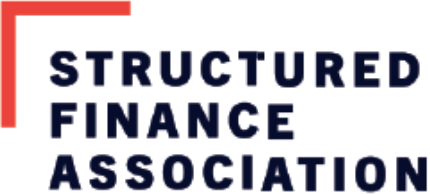By Michael Bright
Policymakers in Europe and the United Kingdom are rightly focused on improving access to capital, strengthening financial-market resilience, and creating sustainable economic growth. They have many levers to pull, but securitization has rightly earned a central place in that discussion as regulatory and political leaders evaluate the next phase of capital markets reform.
The reason is straightforward: securitization encourages investment and growth. It is a proven and powerful financial tool that channels capital from investors to households, small businesses, and infrastructure projects. It reduces funding costs by distributing risk broadly across the financial system. It also expands access to credit without any government expenditure. When structured transparently and used responsibly, securitization contributes to more efficient, inclusive, and stable financial markets.
Regulatory reforms that followed the global financial crisis 15 years ago have significantly improved the safety and standardization of the securitization market. Yet in Europe, the existing framework is more complicated than it needs to be, and key elements—such as due diligence rules and reporting requirements—could be improved to support responsible growth.
The streamlining of disclosure requirements is one promising area for the U.K. and the E.U. Transparency is vital. But overly prescriptive or duplicative rules that add little or no value to investors can deter participation and reduce efficiency. Europe can refine its rules in a way that supports investor confidence while encouraging greater market activity. Disclosure requirements that are tailored to transaction type and investor sophistication would go a long way toward expanding the securitization market without compromising safeguards.
Another priority for Europe should be coordination across the patchwork of financial regulatory authorities in the E.U. and U.K.. A harmonized approach among banking, insurance, and securities regulators would improve market predictability and attract long-term institutional capital. Consistency in interpretation and implementation will give loan originators and bond investors the confidence to participate, especially in cross-border transactions. Proposals likely coming out this summer from the European Commission will reassure market participants that coordinated moves among regulators lead to better outcomes.
The economic benefits of a well-functioning securitization market extend far beyond financial centers. In the U.S., securitization helps lenders finance mortgages, auto loans, small-business credit, and energy infrastructure across the country, even though securitization activity itself may be concentrated in a few big financial centers. Expanding the securitization toolkit in Europe can improve credit access in underserved regions, increase financial inclusion, and support Europe’s climate and digital transition goals.
Securitization also benefits aging populations that need to reallocate their savings from stocks to bonds when they approach retirement. Europe like the U.S. has a large and growing population of retirees who need assets that produce steady income and who would benefit from their pension and other institutional funds being given increased access to securitized products globally.
The global financial crisis of 2008-2009 exposed significant vulnerabilities in securitized loan markets including weak loan underwriting standards. The financial industry learned that bad loans make bad securities. Prudent underwriting standards for lending, especially to consumers, is the key to strong securitization.
During the COVID-19 pandemic, many of these reforms were put to the test. Securitization markets were resilient, adapting in real time to maintain funding flows in a period of profound uncertainty. The system evolved quickly without requiring bailouts or extraordinary intervention.
As capital markets policymakers in Brussels and London prepare the next wave of regulatory proposals, there will be many decision nodes and forks in the road. Hopefully the American system can offer lessons. In America, home ownership is a favored part of civic life, which is why mortgage securities make up so much of its securitization market. Europe, too, can identify industries it wants to give an extra push, perhaps defense or green energy, and consider guarantees on those particular securities.
Europe has momentum to simplify, coordinate, and modernize its securitization regime in a way that facilitates growth for all regions of the UK and EU. Doing so would strengthen financial stability and unlock capital for the businesses and families that need it most. That’s the kind of reform that benefits everyone.


